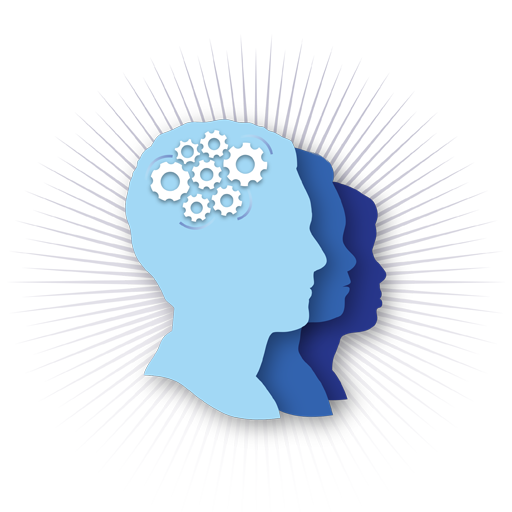OUR SERVICES
Neuropsychological Evaluations
Neuropsychological testing is a comprehensive evaluation designed to measure cognitive, behavioral, and emotional functioning. At Cognitive Solutions LC, we specialize in providing thorough assessments to diagnose learning disabilities, Attention Deficit Hyperactivity Disorder, autism spectrum disorders, and other cognitive conditions. These evaluations are essential for understanding an individual’s unique cognitive profile and creating effective intervention plans.
Neuropsychological testing involves a series of standardized tests and assessments that examine various cognitive domains. These include, but are not limited to:
- Cognitive Ability: This aspect measures overall intelligence and problem-solving skills, helping to identify any discrepancies between potential and performance.
- Memory: Tests evaluate both visual and auditory memory capabilities, essential for learning and daily functioning.
- Executive Functioning: Assessments focus on planning, organization, decision-making, and other higher-order cognitive processes that impact academic and professional success.
- Visual Processing: This evaluates how well an individual interprets and understands visual information, crucial for tasks ranging from reading to navigating environments.
- Auditory Processing: These tests measure the ability to interpret and understand auditory information, which is vital for following instructions and effective communication.
- Attention: Evaluates sustained, selective, and divided attention skills, identifying issues that can affect academic and occupational performance.
- Academic Achievement: Measures skills in reading, writing, and mathematics to identify specific learning disabilities like dyslexia, dysgraphia, and dyscalculia.
In addition to the above, our neuropsychological testing is capable of assessing for autism spectrum disorder. For more detailed information on autism testing, please visit our Autism Evaluation Page.
Why Choose Neuropsychological Testing?
- Identifying Strengths and Weaknesses: By understanding cognitive strengths and areas of difficulty, individuals can better leverage their capabilities while addressing challenges.
- Tailored Interventions: Based on the testing results, personalized strategies can be developed to target specific cognitive and behavioral issues.
- Educational Accommodations: Detailed recommendations for academic accommodations and support can be provided to enhance learning experiences.
- Personalized Treatment Plans: Creating individualized treatment plans to improve cognitive and emotional well-being, addressing both current challenges and long-term goals.
What is the process for Neuropsychological Testing?
- Initial Consultation: This meeting with the psychologist involves discussing the individual’s concerns, medical history, and goals for the assessment. It helps to set the stage for a tailored evaluation.
- Testing Sessions: The actual testing is conducted over approximately 4-5 hours, often split into two smaller sessions to minimize fatigue for younger children. During these sessions, a variety of standardized tests are administered to evaluate different cognitive domains.
- Comprehensive Report: After the testing is completed, a detailed report is generated. This report includes findings, an analysis of strengths and weaknesses, and specific recommendations.
- Feedback Session: A follow-up meeting is scheduled to review the results with the individual and their family. This session helps to explain the findings, discuss next steps, and outline potential interventions and accommodations.
Who Can Benefit from Neuropsychological Testing?
- Children: Identifying and supporting learning disabilities, ADHD and other cognitive challenges can significantly enhance a child’s educational experience.
- Students: Evaluations provide critical information for obtaining academic accommodations and support at all educational levels, from grade school through graduate programs.
- Professionals: Understanding cognitive strengths and areas for improvement can help professionals enhance their job performance and manage work-related challenges.
- Families: Gaining insights into a loved one’s cognitive and behavioral functioning allows families to better support them in their daily lives.
If you are interested in learning more about neuropsychological testing and how it can benefit you or a loved one, please contact us to schedule a consultation.
Professional Credentials




INSIGHTS AND NEWS
Posts About Neuropsychological Evaluations
Getting Proper Support for Children in Special Education — Why is it Challenging?
June 28, 2023 Blog
Parents of children with special education needs face a unique set of challenges...
Private Clinic vs. Public School: What You Should Know About Psychoeducational Evaluations
August 12, 2022 Blog
Education is critical to the development and optimal health outcomes for...
Executive Functioning When You Have ADHD
March 19, 2021 Blog
People can be flippant about ADHD. How many times have you heard someone who got...
How Do I Know I Need a Psychological Evaluation: Executive Functioning (Part 1)
October 7, 2020 Blog
There are several reasons a person might need a psychological evaluation....
What Makes a Good Psychological Evaluation?
September 16, 2020 Blog
There are many reasons why a person would need a psychological evaluation....
TESTIMONIALS
What Clients Say
“This place is amazing our son (6 at the time) was having problems at school. Thanks to their advice our son (now almost 8) is doing SO much better. I would recommend this place to anyone even considering an assessment for their child!”
J.B.
Parent
“The tests Dr. Goldstein used were very accurate in determining the correct concerns, plus he provided excellent advice on tools and resources in moving forward. Five Stars all the way!”
E.H.
Parent
“Our teacher suggested that we test our 8 year-old and we could not be happier with the process, the staff and the outcome. This was one of the best things we could have done for our daughter.”
P.B.
Parent
“Dr. Goldstein and his staff are very professional, patient and understanding about the entire process. Our family is very grateful to have found and highly recommend Cognitive Solutions Learning Center!”
L.M.
Parent
“Dr. Goldstein and the staff at Cognitive Solutions was the best. Dr Goldstein helped my son through the extensive testing, identify and explain his learning disability, along with giving him hope for a brighter future! Thank you.”
H.P.
Parent
“After observing my son demonstrating disruptive behavior, I was advised to take him to CSLC for testing. They were able to identify issues and offer realistic strategies to put him on the path to success.“
C.J.
Parent
“We have been patients of Cognitive Solutions for years. The evaluations are thorough without taking too much away from school. We would recommend for evaluations we well as learning specialist needs.”
M.B.
Parent






